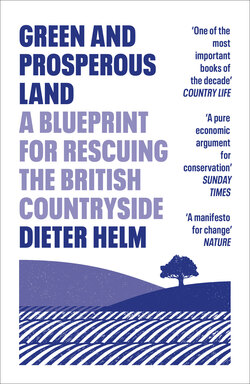Читать книгу Green and Prosperous Land - Dieter Helm - Страница 20
More houses
ОглавлениеWith the growth of population has come an assumption that Britain needs more houses, and all the main political parties have committed to building more. The Conservative and Labour parties are competing to come up with ever-higher targets. These extra houses could pose a great challenge to the natural environment, and the impacts depend on where and how they are built and what supporting infrastructure is provided. On a business-as-usual basis, it could mean more ribbon development, more incursions into the Green Belt, more loss of greenfield land and more traffic and associated infrastructures. Every city, town and rural village is getting houses added and, with housing a political imperative, there is so far scant evidence that the environment is going to do anything other than suffer, as it did in the 1930s with the creation of ribbon development and suburbs, and in the 1960s too. There is little beauty in this business-as-usual world.
The increase in population does mandate more houses, but the demand for houses is more complicated. Britain has a high level of owner occupation (even if it is falling), and owning a house is the main way in which citizens acquire wealth by what is in effect forced savings. British people want to own houses, in addition to needing housing. It is still a core part of the ‘British dream’ for young families, in a way that young Germans would not appreciate, even as fewer can afford it.[15]
The emphasis on ownership reinforces a further trend, which is household break-up. More people are choosing to live alone and still own houses, and this is reflected in a fall in occupancy rates. Whether there are enough houses to go around depends on how many people live in each of them.[16]
The point about occupancy rates drives a wedge between the simple equation of population and the number of houses needed. It gets worse: as people get richer they want bigger houses; they want more privacy and seclusion, and they may even want more than one house. The constraint on housing demand is income. House builders know this. It is one of the reasons why they prefer to build large ‘executive homes’ and not affordable small ones.
Changes in housing size and occupancy in turn have implications for the environmental footprint. A row of small tenements or blocks of apartments and flats in inner cities have radically lower environmental impacts than those of larger houses and housing estates on the periphery of towns and cities. Dense urban housing creates fewer carbon emissions and less traffic, and brings economies of scale and density. Imagine a world where most people lived in cities, and most of these in the city centres. It would be a world of public transport, not private cars, and of radically greater energy efficiency. It would leave most of the rest of the land open and green, and indeed it would create more scope to green the suburbs with lots of natural capital for these urban populations to enjoy.
What these considerations illustrate is that housing left to market forces will be an environmental disaster and will replicate some of those disasters now being witnessed in a number of rapidly developing countries. Market forces drive up demand for houses in line with income. If the next decades witness 2 to 3 per cent GDP growth per annum, it is not hard to see that much of the Green Belt, and lots more green fields, will be concreted over by 2050. If each development does not have to pay for the environmental and social costs it imposes on the rest of the population, it will impose them. Imagine how quickly the Green Belt would fill up if the landowners could sell to the highest bidders without worrying about planning permission and paying for the environmental detriments caused. Paying for top lawyers and using consultants, lobbyists and PR companies to influence legislation and planners’ decisions has worked for them in the past, and it could go on doing so. Indeed, it is.
This is why planning is essential to housing and housing development. Britain needs to decide how many houses should be built, what sort of houses should be built, and where they should be built. That was the step taken in the 1947 Planning Act, and with the creation of the National Parks (which were largely planning bodies – more on this later). It has now fallen away.
It is perfectly possible to house the growing population without a net detriment to the natural environment. Indeed, the environment can be enhanced as part of the process. Nor is it necessarily the case that house prices have to rise, provided that the impacts of developments on the rest of the natural environment and us are properly priced, compensation is paid and prudently spent on new and enhanced natural capital, and, overall, houses are not protected from taxation to make them particularly attractive ways of accumulating wealth. But to do this requires much more efficient policies, to which we will return later.
